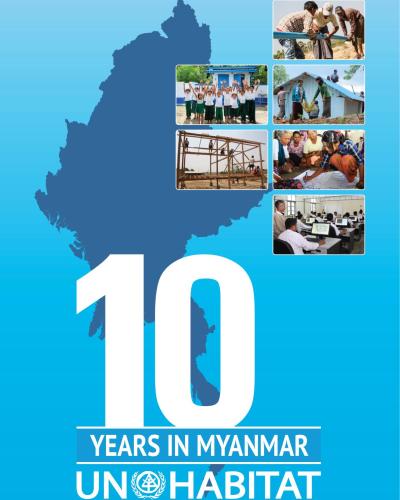UN-Habitat 10 Years in Myanmar

“UN-Habitat 10 Years in Myanmar” provides a comprehensive narrative of UN-Habitat Myanmar’s 10 years of engagement in the country describing achievements in the areas of disaster risk reduction and urban resilience, climate change, basic services, housing, urban planning and development, land administration, and slums improvement.
UN-Habitat established a presence in Myanmar in the early 1990s through 2004 during which time the agency pioneered introducing community-driven development through its flagship “People’s Process”, and established the first community-led projects in the Dry Zone, Shan State and the Delta.
UN-Habitat re-established its presence for humanitarian assistance in 2008 after the country was struck by Cyclone Nargis and continued its cooperation with the Government of the Union of Myanmar in reconstruction and rehabilitation, following the principles of building back better by incorporating disaster resilient construction techniques. UN-Habitat continued its work in disaster risk reduction and urban resilience building while embarking into its normative areas of work. In the course of the last decade it has scaled up its projects and programmatic activities in four crucial thematic areas in order to assist the government and the people of Myanmar at a crucial time in their quest for a democratic, worthwhile future. During this period UN-Habitat in Myanmar implemented one of the most diverse programmes, as it has the second largest portfolio in the Asia and Pacific Region after the UN-Habitat Afghanistan Programme.
UN-Habitat in Myanmar has attained a large number of notable achievements in Policy and Strategy formulation, Capacity Building Support and knowledge and technology transfer in several normative and operational activities focusing on the four thematic areas of i) Participatory urban planning, management and governance; ii) Improving human settlements and rebuilding communities; iii) Land administration and management and pro-poor housing; and iv) Environment, disaster risk reduction, resilience building and climate change.

